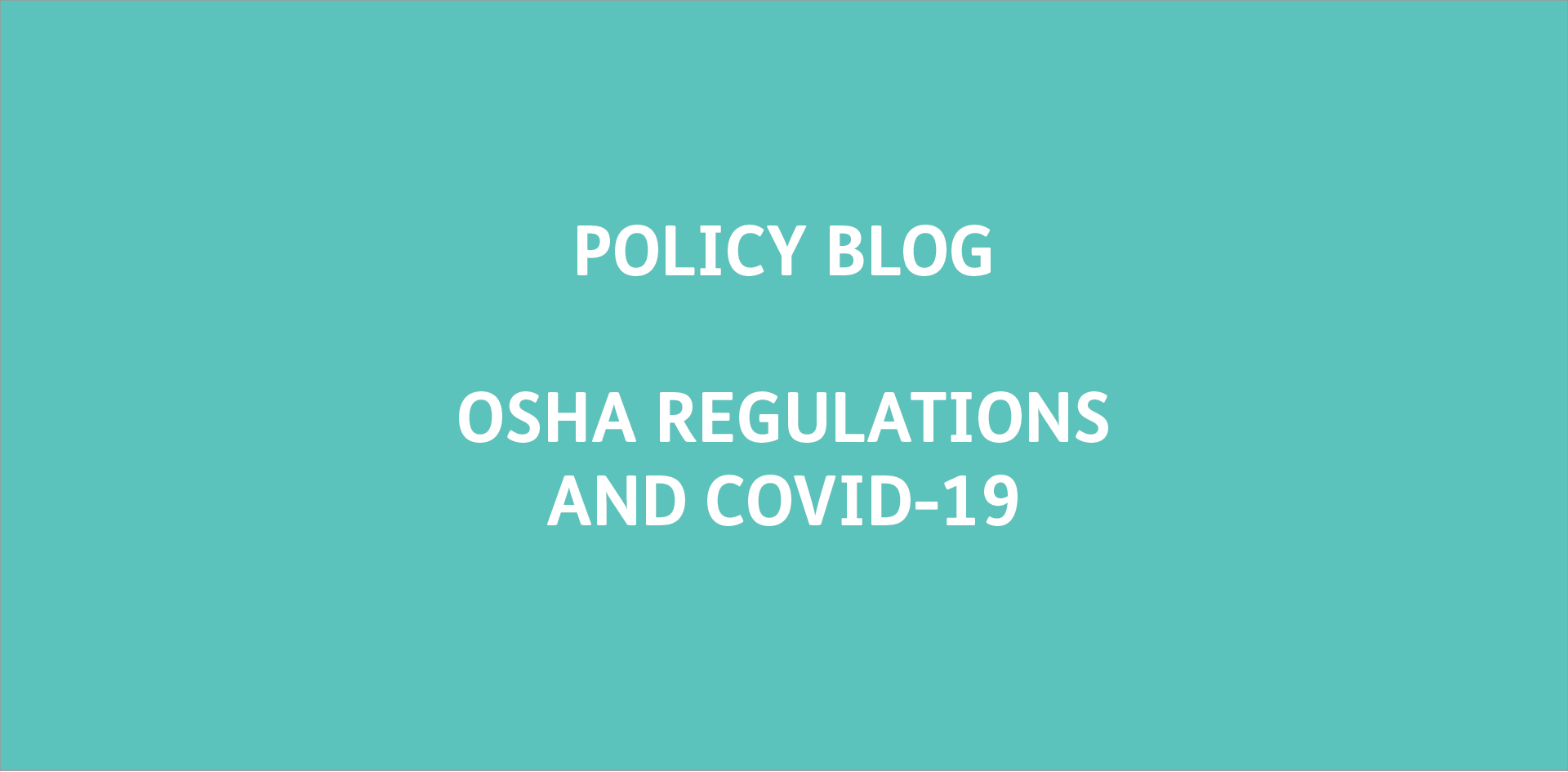By Jared Rothstein, Senior Manager, Regulatory Affairs
The following guidance addresses OSHA health and safety regulatory requirements related to the current COVID-19 pandemic. Please note that this guidance is for informational and educational purposes only, and companies should seek the advice of counsel before implementing internal policies.
Applicable OSHA Standards and Regulations:
While no OSHA standards directly deal with COVID-19, the General Duty Clause is likely to apply at most workplaces. Several other, more specific OSHA standards can also apply to circumstances under the pandemic: sanitation, respiratory protection, personal protective equipment, and reporting and recordkeeping. Earlier this month, OSHA issued “Guidance on Preparing Workplaces for COVID-19,” which describes steps that all employers can take to minimize risks to employees from the Coronavirus. The document also provides guidance for classifying employees by level of risk, with additional recommendations for each level, keyed to the hierarchy of controls. We urge members to review it.
Some general considerations to keep in mind:
OSHA General Duty Clause:
The OSHA Act General Duty Clause requires that “each employer shall furnish each of his employees employment and a placement of employment which are free form recognized hazard that are causing or likely to cause death of serious physical harm to his employees.” There are four primary elements to prove a violation of the General Duty Clause: that a hazard exists, that the employer or its industry recognizes the hazard, the hazard is likely to cause death or serious injury, and feasible means exist to eliminate/reduce the hazard. It seems likely that COVID-19 is a generally recognized hazard, thus obligating employers to take reasonable steps to eliminate, or more likely mitigate, the hazard.
OSHA Sanitation Standard:
The types of hygiene recommended for COVID-19 heighten the importance of complying with this standard, which requires handwashing facilities with soap or similar agents, and imposes additional requirements for areas where food and beverages are consumed on the premises.
OSHA PPE & Respiratory Protection Standards:
This standard may require wearing of gloves, depending on whether an employee has frequent and close contact with other people who may be infected. If an employee requests to voluntarily use a respiratory or face mask, the employer is not required to provide one if they have determined that respiratory protection is not required to address a health hazard in the workplace (i.e., if there is no foreseeable exposure to a toxic chemical or an airborne illness in the workplace). However, employers could face compliance issues with OSHA’s General Duty Clause if there is in fact an elevated risk in your workplace to COVID-19. If an employer ultimately permits the voluntary use of a respirator, the employer must still meet requirements of the respiratory protection standard (including for N-95 filtering face masks). Dental and surgical masks however are not considered respirators by OSHA, however, and cannot achieve compliance with the standard.
OSHA Recordkeeping and Reporting:
There is an exception in OSHA’s standard that states that the common cold and flu are not recordable incidents in employer 300 logs. However, OSHA has explicitly stated that COVID-19 is a recordable illness when a worker is infected on the job. Determining if the specific case is recordable would require a positive test to confirm whether the employee has contracted COVID-19 and distinguish it from the cold/flu exemption in the regulation. Work-relatedness must also be determined.
OSHA reporting tied to COVID-19 would be required when there is a fatality or a hospitalization. Hospitalization is reportable if the employee received formal admission to the in-patient service of a hospital or clinic for care or treatment within 24 hours of the work-related exposure. The fatality is reportable under the regulation if it occurs within 30 days of a work-related exposure.
Employers are only required to record injuries and illnesses if they occur within the geographic coverage of the OSHA Act and OSHA regulations (i.e., within the federal jurisdictional boundaries of the United States). Thus, if an employee is exposed overseas while on work travel, it would not be considered a reportable/recordable incident to OSHA. However, if the employee returns to the U.S. workplace and other employees subsequently contract the virus, secondary cases would be recordable if they meet the criteria noted above.
OSHA Anti-Retaliation Provisions:
OSHA has anti-retaliation regulations in place to discourage employers from punishing employees who report injuries and illnesses. A sick employee who refuses to work may potentially be protected by OSH Act anti-retaliation provisions if the employee believes in good faith that: (i) an imminent danger exists in the workplace and (ii) there is insufficient time to eliminate the danger through resort to regular statutory enforcement.
OSHA Audits and Inspections:
If an employer is unable to meet various regulatory deadlines (e.g., 3 year PSM audits, PHAs, annual LOTO inspections, etc.) as a result of travel restrictions or from a reduced workforce resulting from COVID-19, OSHA is likely to provide some temporary flexibility in the near term if the employer (i) demonstrates good faith efforts to schedule these audits in advance, (ii) documents why they are going to miss the deadline, (iii) undertakes any interim measures or effective alternative measures where feasible, and (iv) shows that they did something in response to their practical inability to meet the requirement.
OSHA is currently actively working on publishing enforcement guidance on all time-dependent requirements in OSHA standards, but they do not have an estimate on when the guidance will be published. SOCMA will provide more information on the guidance once it is available.
Categorized in: COVID-19/Coronavirus, Policy
